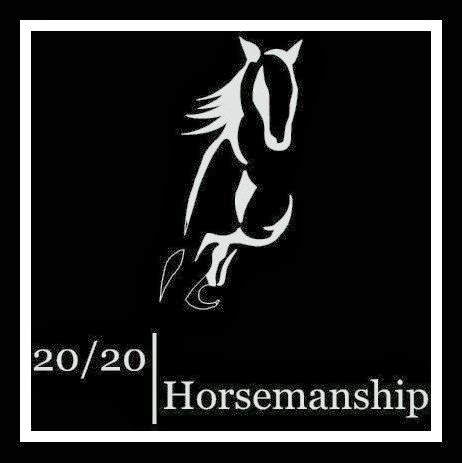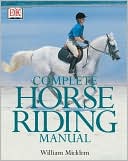Posted by Rick Gore
Category: General
Wow, talk about big topics. I call this "The Big Three”. These are sometime mystical terms that are used often and most people never really understand them, never know their importance or never experience them. These things come from "Time". Time handling horses, time working horses, time riding horses, time watching horses, time making mistakes, time seeing others do it right, time seeing others do it wrong, time listening to the horse and time reflecting on all of this. "If you take the time it takes - it takes less time.
Sounds like double talk. Sounds like old horse whisperer stuff. Are these things really real or is it something that old timer’s just talk about to intrigue others. Let’s talk about each one of these since I think they are all connected and all affect each other. So I will try and discuss them individually.
-- Release: Anyone can pull or yank a horse, but it takes someone who understands how to release, and how to release with timing and feel to really get results. Release is that exact moment where learning takes place in the horse. The second a horse gets release, he connects that release to the right answer. So if a horse is pressured by a person and it rears and as soon as it rears, it scares the person putting on the pressure, so the person backs away in fear of their safety, the horse sees this as release. So the person gives release, but with bad timing. The horse does not know this, it only knows, it got release when it reared, so rearing gets him release, therefore, rearing must be the right answer. This is an example of bad release but since release teaches, the horse always sees release as good.
Good release teaches the right thing. So if a person tries to get a horse to back up and puts pressure to back up and as soon as the horse takes one step back, the person releases, and then the horse learns that backing up is the right answer. If the person stops pressure when the horse turns away, rears, or tries to bite them, then the horse thinks and learns that is the right answer. So knowing release only works if the person knows how and when to release pressure. Almost everything a horse learns is by pressure and release. An example of a horse learning something without pressure and release is more "classical conditioning". You break a carrot in half, the horse hears this, knows what this is and comes over to get the carrot and you give the carrot to the horse. However, this could be seen by the horse as pressure and release if you are not careful. If done wrong, the horse can see him coming over to you as putting pressure on you and then you giving the carrot is release from his pressure on you. Everything with a horse is how they see it. This is a Key Point.... it does not matter what you intended to do, what you do or what you think you did, it only matters how the horse sees it. Too often I see people teaching things they do not know they are teaching and then wonder why the horse does it. I have a couple of videos that explain Classical condioning on youtube: www.youtube.com/watch
So understanding release is very important so you can know what you are teaching, when you are teaching it and when you did it wrong. And remember, once you understand release, if you do it with bad feel and timing, it means nothing and you will be teaching something you did not intend to teach. Confused yet? We are just getting started.
-- Timing: Sounds like a clock thing; if you can tell time you can have timing? If you can hit a baseball, drive a car or play any sport you should have some sort of timing. So having timing with a horse should not be that difficult. Well, timing could be a horse book in itself. Timing comes from doing wrong, experience (good and bad) and many other lessons from many horses. Pull on a horse at the wrong time and you get a fight, pull too early and you create the horse to pull, pull too late and you get behind the leverage point and you get dragged or get the rope pulled out of your hands. Of course pulling requires release, so if you time it right and don't release right, you blow it.
On the other hand if you have timing, you can get a horse to do things twice as fast, twice as easy and twice as good. Wow, this sounds pretty important, why are so many people so confused about it? It takes time and practice to learn it, develop it, perfect it and refine it. Every horse requires it to be done differently, maybe just a little but each one responds to timing with different feel. So having good timing with bad feel does not work, having good timing with bad release, does not work. All three are required, all three have to be constantly adjusted and all three need to be refined depending on what the horse does and how the horse responds.
-- Feel: This is putting timing and release together with constant adjustments. So, lets look at this like kissing a girl (girls apply this to guys), a kiss is a kiss right? Kiss your wife good morning is different than kissing her goodbye. Kissing her after not seeing her for a month is different than kissing her after a hard day of work. Kissing her after giving birth to your child is different than kissing her for getting you socks for your birthday. Kissing her after she is in a car wreck is different than kissing her after you broke her favorite silly glass thingy collection special piece. Kissing her after you say "I do" is different than after she says "No you can't". And lastly kissing her after or during that special private time is also very different. So if someone said how many ways can you kiss, your first response may be a kiss is a kiss, but if you think about it and break it down, very little changes in timing and situation changes the feel and way you kiss. And of course, I kiss my horse differently than I kiss my girl. :)
So just applying feel to a kiss you can see it has many variables. Now lets apply feel to how you handle a rope, how you put on a head stall, how you catch a horse, how you saddle a horse, how you pick a horse's feet, how you handle a horse in general, how you ride a horse, how you handle the reins, how you move towards a horse (pressure), how you move away from a horse (release), how you look at a horse, how your body is used to influence a horse and understanding a horse can feel and shake a fly off his hip. If you are thinking how can anyone know all this, welcome to the world of horsemanship. No matter how long you do it, you are always learning from each and every horse. You never know it all and the journey is never-ending.
Then how can anyone claim to teach this? I have not seen too many that try and teach feel. Tough subject and not easy to learn. This would explain why so many people have so called "problem horses". You may hear things like, soft hands make soft horses. You can't pull a horse to softness, but if you don't know timing and release, feel will not matter.
I mentioned handling the reins earlier. Feel is so important here. Too rough, too loud, too soft, too easy or too inconsistent will all result in confusion to the horse. When a horse is confused for too long it will stop trying to learn and stop searching for the right answer. Then they look at other cues as picking or harassment and then they can become upset or they feel (different kind of feel) that there is no right answer and they can't find release so they go into fight mode if they cannot flee. So feel on the reins can very helpful or can teach bad lessons. Being soft at the right time, firm at the right time and consistent will teach a horse how to be soft. But all this needs to be with timing and release.
Let’s see if I can tie these together now. A good example of using all three of these would be catching a horse. How many times do I hear the same old story, "my horse won't let me catch him", "my horse is hard to catch", "my horse just runs away when I try and catch him", and my first answer to this is "STOP trying to catch him".
In order to catch a horse you need release, timing and feel. You need to know how to release pressure when the horse looks at you or faces you. You need to release this pressure with timing so the horse connects the release with the looking or facing you. You need feel to read the horse on how to put just enough pressure to create movement and just enough release to draw or stop movement. So when catching a hard to catch horse, a person with understanding of release, timing and feel can catch most any horse. And since a very common complaint is how do I catch my horse, this tells me that most do not have a clue about the big three. Can I teach you this? Can anyone teach you this? My answer is the best teacher of the big three is the Horse. Listen, watch, and learn from the horse and stop trying to teach, train and improve the horse. Always remembering, "The best teacher of the horse - is the horse."
Happy Trails,
Rick
















